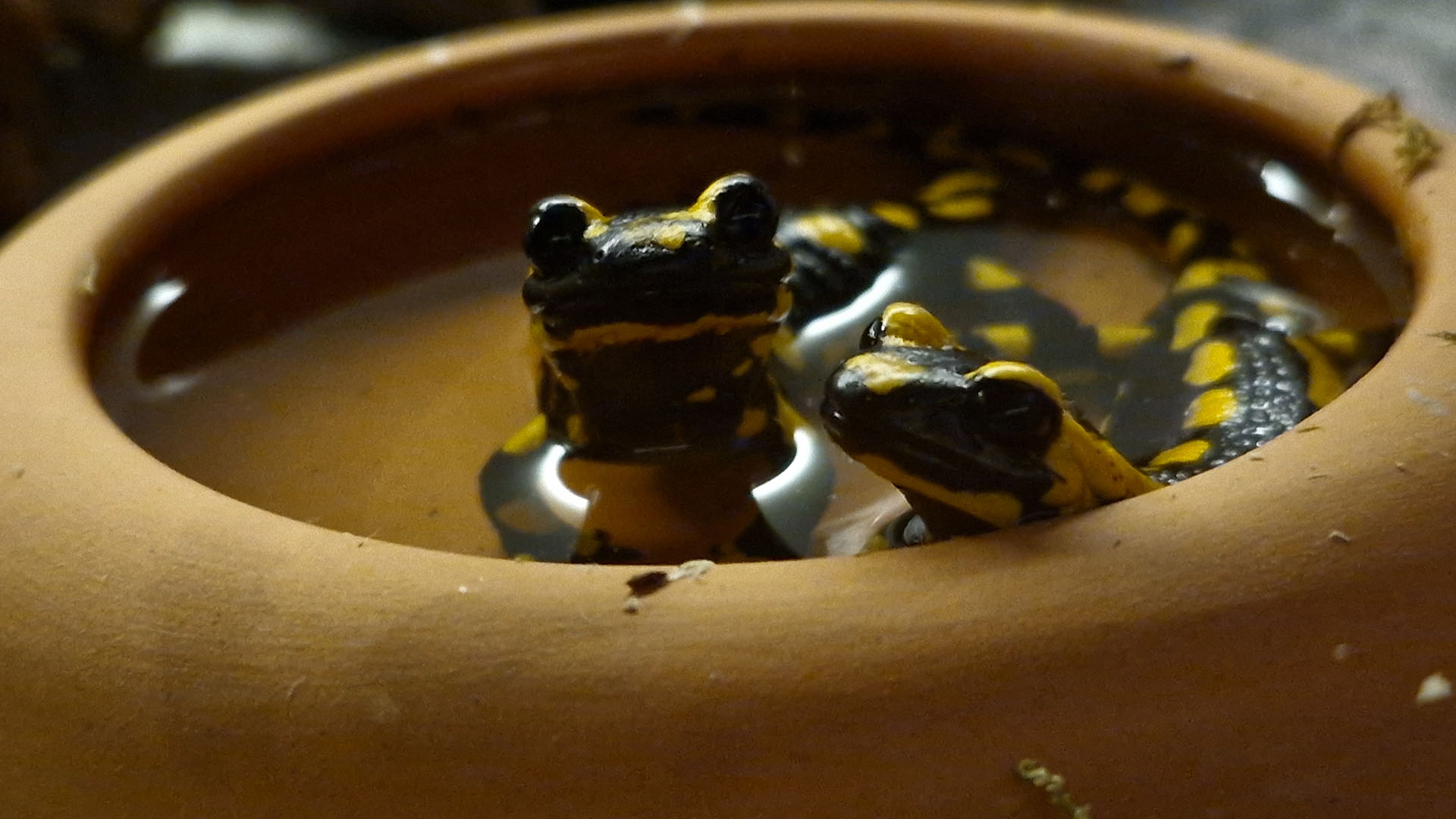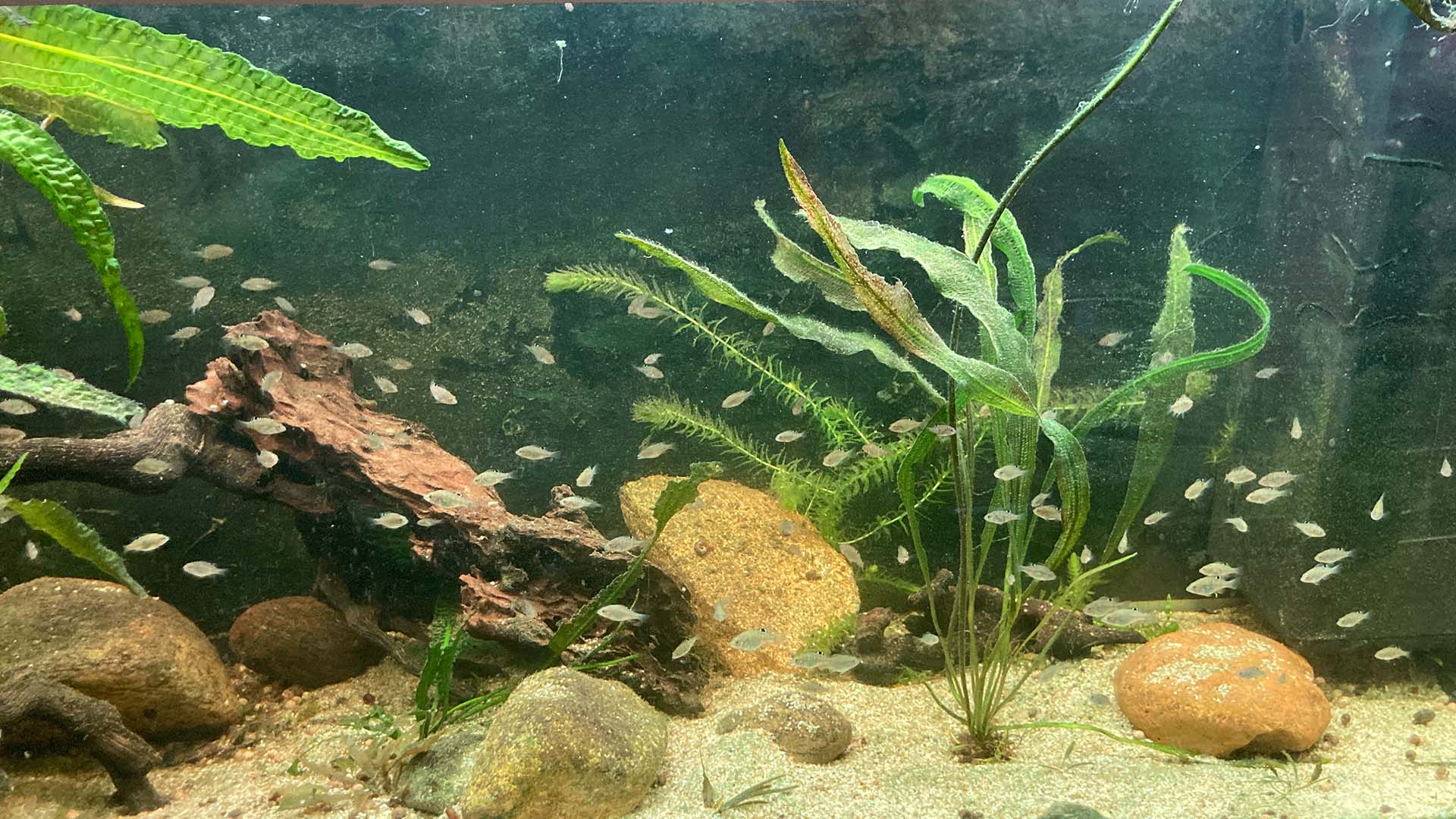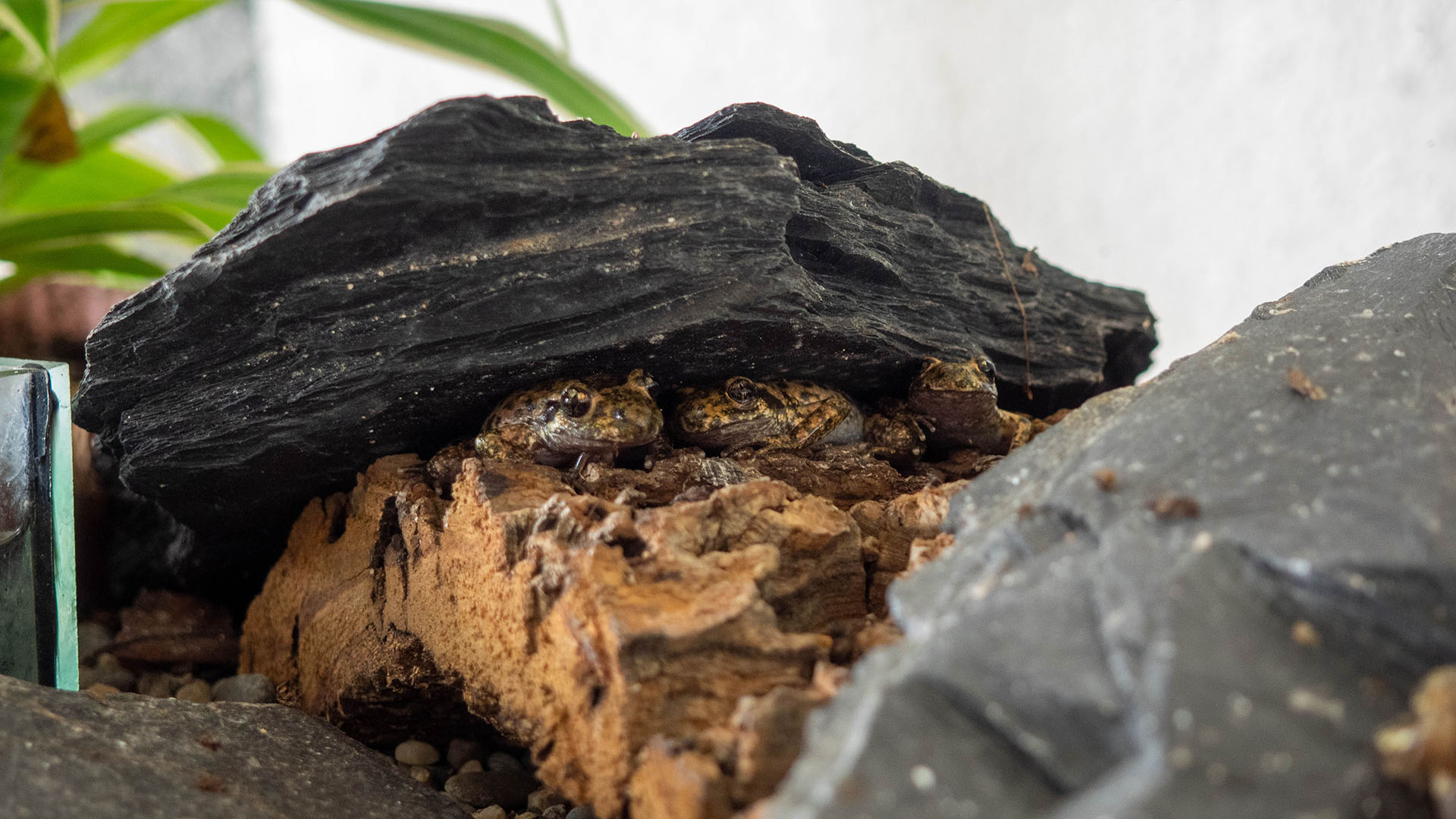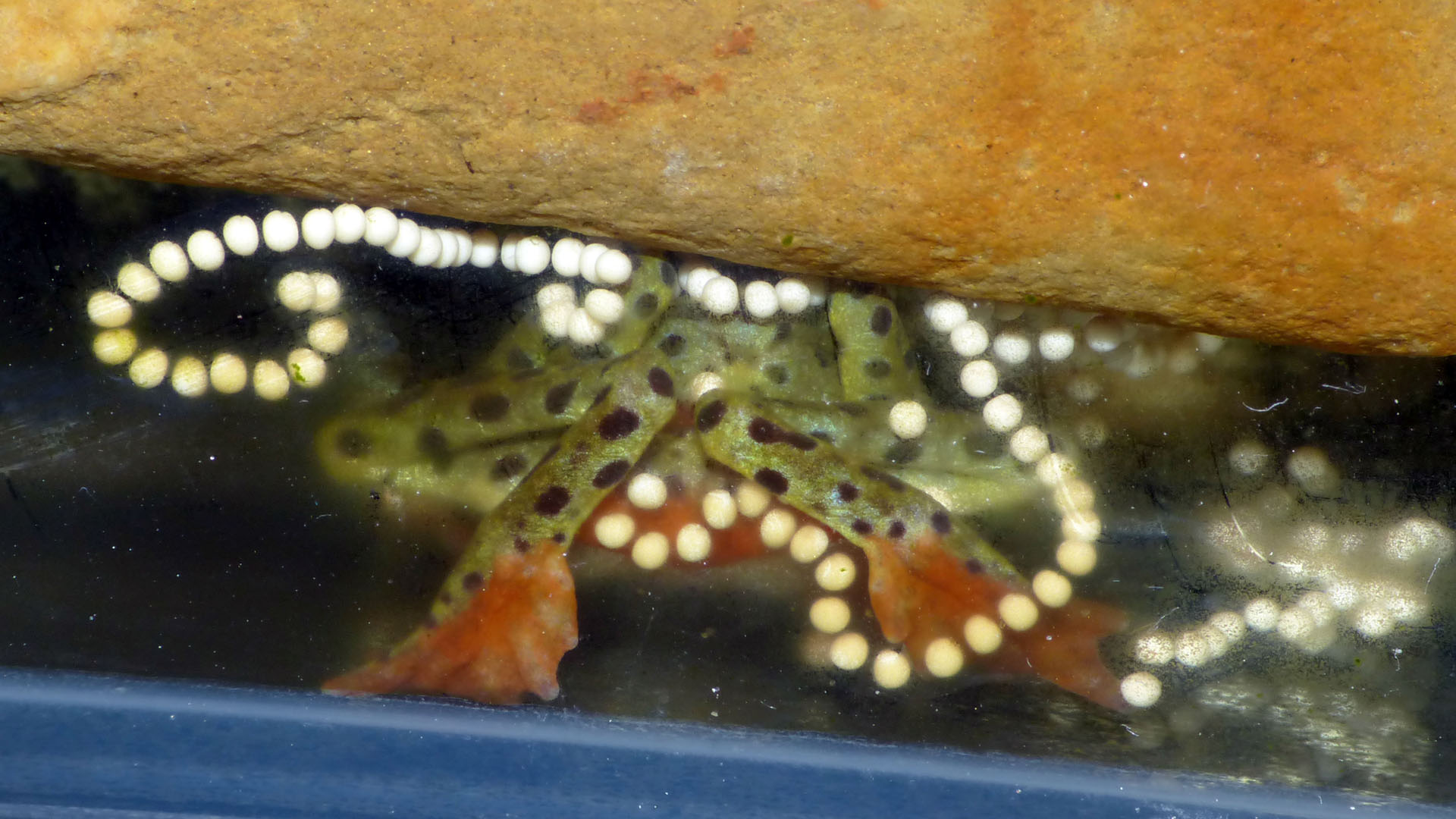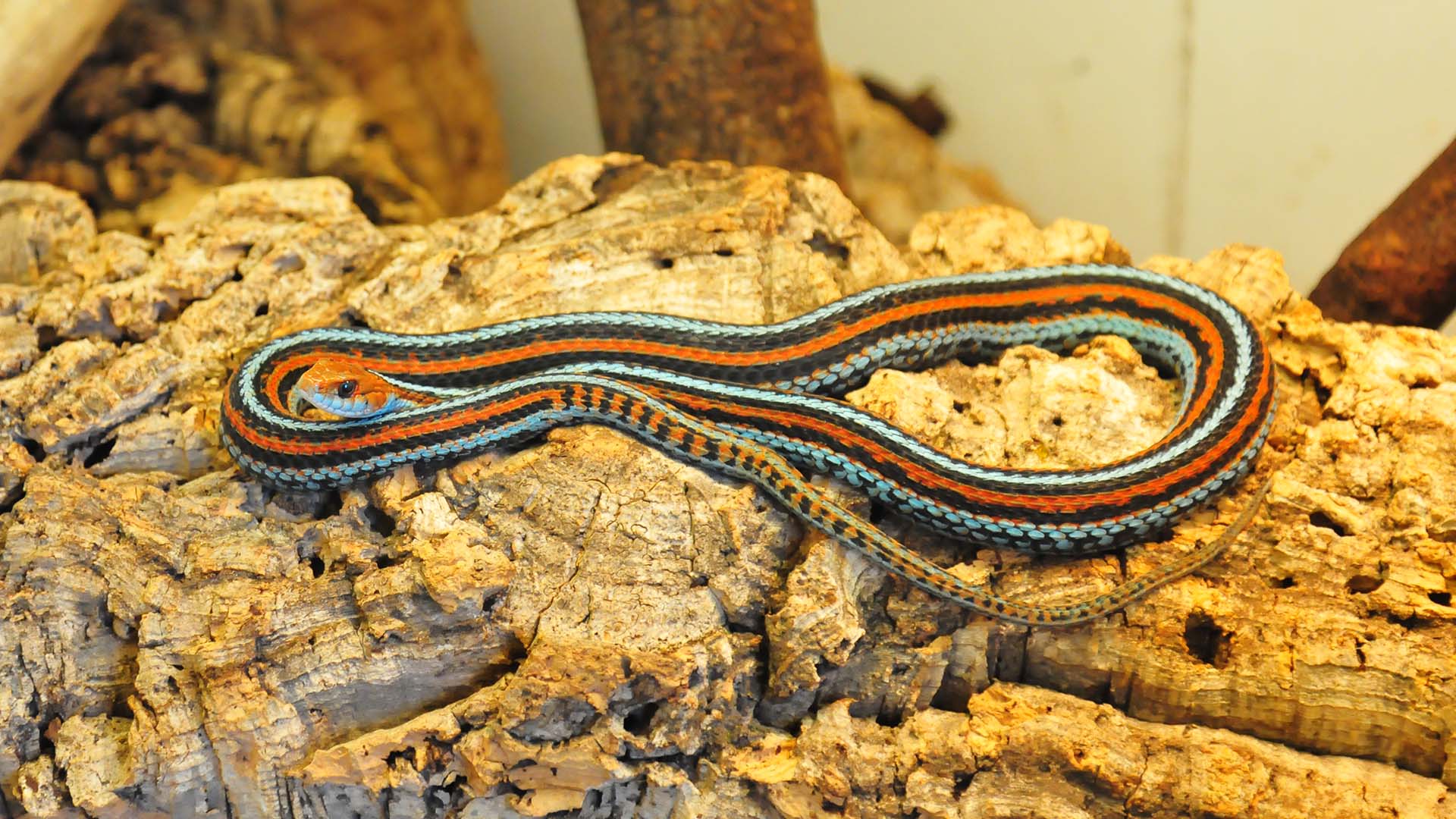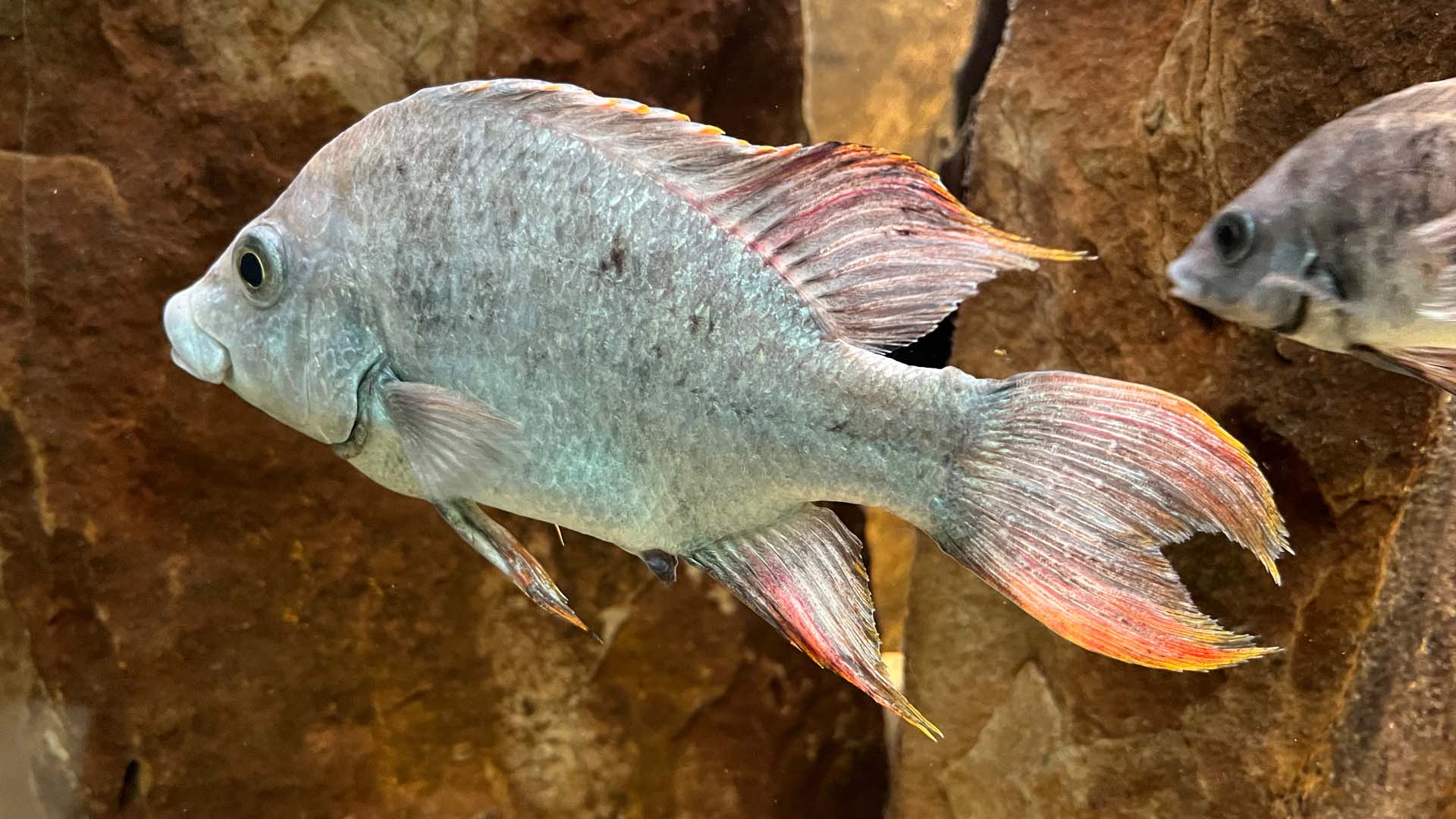
The CC participants’ aquariums and terrariums are inventoried twice a year. On March 1 and September 1, we count how many animals are in the tanks and which offspring have grown up. That sounds easier than it is.
Who am I and if so, how many?
If you are more used to dealing with dogs or cats, you might think you always know exactly how many animals you have in your care. But with a terrarium equipped with a richly structured rock back wall and a population of twelve small, barely distinguishable toads or a lushly planted aquarium and shoals of dozens or even hundreds of juvenile fish, it takes some effort to be able to give a reasonably reliable number. But CC needs this in order to know about the progress of conservation breeding. And, of course, to find new people interested in adopting young animals, for example. As it usually takes a few weeks for us to gather all the figures from all the participants and enter the data records, we always publish our animal population as of May 1 and November 1 – we also need a little time for the final processing – at the end of May and November respectively. These figures include the results of the animal population reports and, of course, all animal movements and population changes that we have initiated ourselves by the reporting date or of which we are still aware. Of course, this is only ever an approximation, because we will only find out whether, for example, new newts have hatched somewhere in the meantime with the next stock report. So now we have at least explained in detail how these animal population tables and the biannual report are actually compiled.
Welcome to the club
From the general to the specific: At the beginning of 2023, when we formally established the #Fish and #Reptiles specialist groups, we also decided to include four and five additional species in these animal classes respectively, which are now gradually moving in with our participants. This will take some time because many of the animals are not readily available. In addition, husbandry requirements have to be researched and put down on paper at the same time. In order to be able to work through everything we have planned and what CC can process with its limited personnel capacities, no new species are initially planned for 2024. Consolidation is the keyword. But most of the “newcomers” from 2023 are now actually on board. Welcome to San Francisco Garter Snake (Thamnophis sirtalis tetrataenia), Nguru Spiny Pygmy Chameleon (Rhampholeon acuminatus) und Mauritius Lowland Foerst Day Gecko (Phelsuma guimbeaui). The only reptile missing now is the Huu Lien Tiger Gecko (Goniurusaurus huuliensis), whose lively young are already sitting in Cologne Zoo and will soon be moving to their new CC caretakers. Among the fish, the african perch Limbochromis robertsi will soon follow. Among the amphibians, the Lesser rock skipper (Staurois parvus) has been added since the last stock report, and Arndt’s Toothed Frog (Odontobatrachus arndti), which is awaiting its planned relocation at the Museum für Naturkunde Berlin, is due to follow shortly. Then we will be complete for the time being. Then we will be complete for the time being. But of course we still hope that the projects on the Nimba toad and Goliath frog, which have been planned for years, can also be realized one day – it would certainly be necessary in view of the threat situation.
We will be publishing the corresponding species pages, including recommendations for keeping them, bit by bit over the next few months – we have just made a start with the Lesser rock skipper (Staurois parvus) as part of the recent relaunch of the CC page.
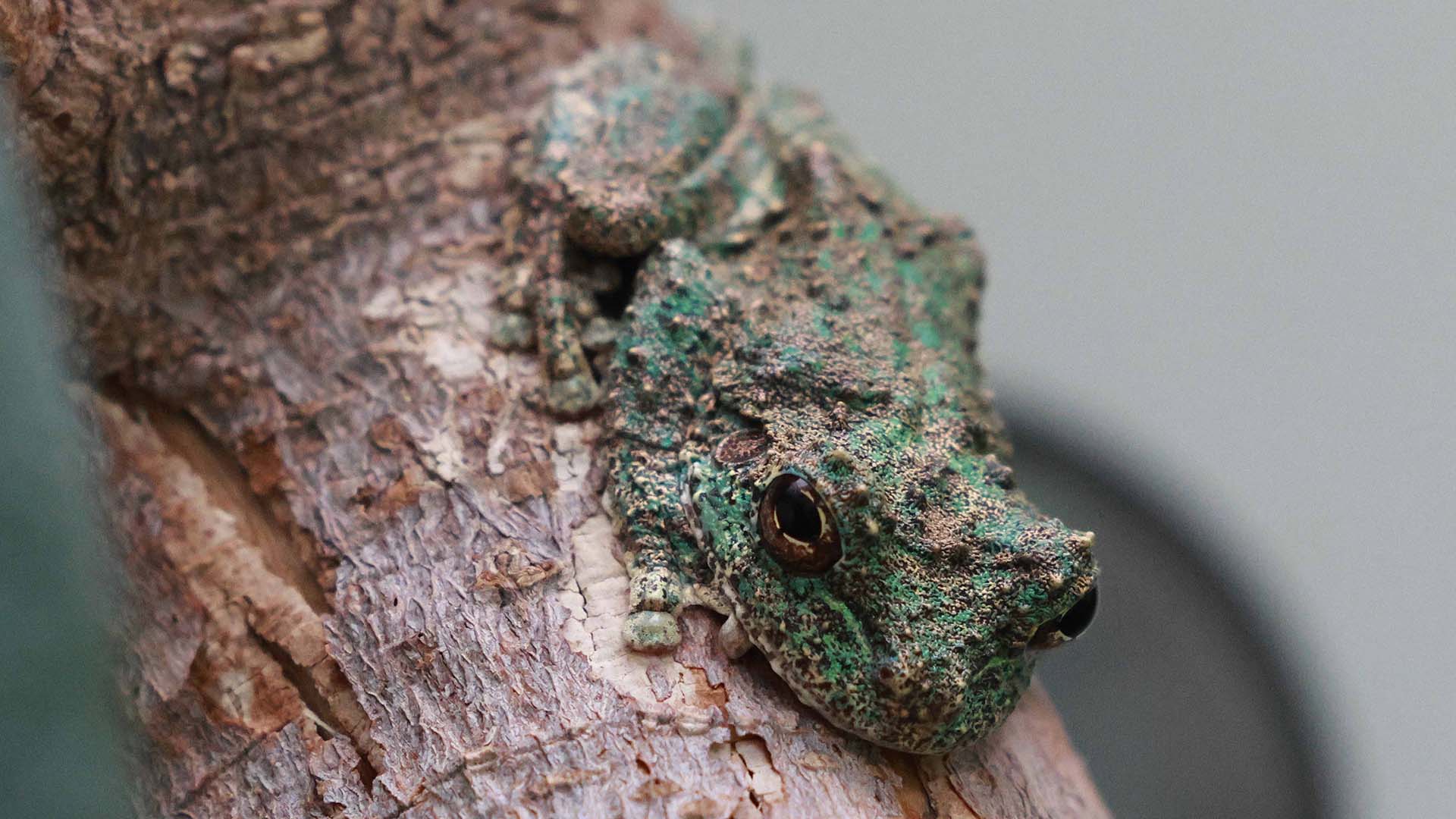
One of the species selected for inclusion in the CC program in 2023 is the San Martín Fringe-limbed Treefrog. @ Claudia Philipp, Wuppertal Zoo © Claudia Philipp, Zoo Wuppertal
Things are moving forward
All in all, CC has made pleasing progress in the last six months. Our participants are now looking after 5,099 animals from 29 taxa in 281 holdings. In comparison: six months previously, there were 3,900 animals from 25 taxa in 230 holdings. So things are moving forward!
A look at the population table naturally shows that the programs are at very different stages. While we have already reached the stage of long-term population management for three species – the Vietnamese crocodile newt, the Mallorcan midwife toad and the Mangarahara cichlid – we are still at the very beginning for others. We are particularly pleased that the Almanzor fire salamander has had its first successful offspring this year. The little ones are still in the early larval stage and therefore not yet recorded as offspring in the table, but we hope that they will continue to grow healthy and strong. Our keepers were also particularly successful with the Rio Pescado stub-foot toad. The founder animals, which were only imported from Ecuador in the summer of 2023, have already successfully reproduced in three of our enclosures. A spectacular success for a species that was already thought to be extinct.
In terms of fish, our participants were able to achieve their first breeding successes with the Tiger Limia (Limai islai) and the Bintan Gourami (Parasphromenus bintan). Congratulations! Congratulations!
And of course we are particularly excited about the results of the 2024 breeding season – we will be asking our conservationists again on September 1 and presenting the results here at the end of November. And perhaps one of the breeding figures will also reveal an aquarium or terrarium in your home?
Stock overview May 2024
(You can scroll horizontally in the table.)
| Scientific name | Engl. name | Animals total (m/f/u) | Keepers total | Deaths 11/23 – 04/24 (m/f/u) | External delivery 11/23 – 04/24 | New offspring 11/23 – 04/24 | External arrivals 11/23 – 04/24 | Aim (animals, keepers) | status* |
|---|---|---|---|---|---|---|---|---|---|
| Amphibians | |||||||||
| Agalychnis lemur | Lemur Leaf Frog | 51 (6/8/37) | 8 | 13 (7/2/4) | 0 | 13 | 0 | 225, 40 | 21 % |
| Alytes muletensis | Mallorcan Midwife Toad | 896 (43/42/811) | 47 | 51 (3/2/46) | 84 | 330 | 0 | 425, 53 | 94 % |
| Ambystoma andersoni | Anderson’s Salamander | 61 (13/20/28) | 9 | 8 (4/1/3) | 0 | 0 | 0 | 225,40 | 25 % |
| Ambystoma dumerilii | Lake Patzcuaro Salamander | 248 (65/60/123) | 28 | 11 (2/0/9) | 0 | 53 | 0 | 225, 40 | 85 % |
| Atelopus balios | Rio Pescado Stubfoot Toad | 378 (15/13/350) | 7 | 31 (0/1/30) | 0 | 380 | 0 | 225, 32 | 61 % |
| Bombina orientalis | Oriental fire-bellied Toad | 278 (49/36/193) | 22 | 24 (0/0/24) | 0 | 58 | 1 | 225, 60 | 68 % |
| Ecnomiohyla valancifer | San Martín Fringe-limbed Treefrog | 33 (0/0/33) | 2 | 5 (0/0/5) | 0 | 0 | 16 | 225, 56 | 4 % |
| Epipedobates tricolor | Phantasmal Poison Frog | 44 (2/2/40) | 4 | 1 (0/0/1) | 0 | 0 | 0 | 320, 45 | 9 % |
| Gastrotheca lojana | Loja Marsupial Frog | 12 (5/7/0) | 3 | 0 | 0 | 0 | 12 | 225, 38 | 5 % |
| Ingerophrynus galeatus | Bony-headed Toad | 40 (23/12/5) | 6 | 2 (0/1/1) | 0 | 2 | 0 | 225, 40 | 16 % |
| Minyobates steyermarki | Demonic Poison Frog | 34 (9/5/20) | 7 | 2 (0/0/2) | 0 | 0 | 10 | 110, 20 | 33 % |
| Phyllobates terribilis | Golden Poison Frog | 54 (10/5/39) | 11 | 0 | 0 | 9 | 12 | 225, 70 | 20 % |
| Salamandra sal. almanzoris | Almanzor Fire Salamander | 24 (17/7/0) | 7 | 0 | 0 | 0 | 0 | 185, 30 | 18 % |
| Salamandra salamandra (D) | Fire Salamander | 166 (28/18/120) | 21 | 14 (1/0/13) | 0 | 0 | 28 | 330, 90 | 37 % |
| Staurois parvus | Lesser Rock Skipper | 45 (15/15/15) | 2 | 0 | 0 | 0 | 45 | 500, 10 | 9 % |
| Telmatobius culeus | Titicaca Water Frog | 68 (11/16/41) | 7 | 0 | 0 | 27 | 0 | 225,45 | 23 % |
| Tylototriton vietnamensis | Vietnamese Crocodile Newt | 234 (32/37/165) | 26 | 13 (3/4/6) | 65 | 112 | 0 | 185, 30 | 93 % |
| Tylototriton ziegleri | Ziegler’s Crocodile Newt | 22 (6/6/10) | 6 | 2 (2,0,0) | 0 | 0 | 0 | 185,30 | 16 % |
| Fish | |||||||||
| Bedotia madagascariensis | Madagascar Rainbowfish | 176 (25/28/123) | 12 | 2 (2,0,0) | 0 | 41 | 10 | 192, 16 | 83 % |
| Cyprinodon veronicae | Charco Palma Pupfish | 26 (9/17/0) | 3 | 3 (1,2,0) | 0 | 0 | 10 | 225, 15 | 16 % |
| Limia islai | Tiger Limia | 244 (85/75/84) | 5 | 22 (0,0,22) | 0 | 125 | 92 | 2000, 20 | 19 % |
| Parosphromenus bintan | Bintan Gourami | 16 (2/2/12) | 1 | 4 (2,2,0) | 0 | 12 | 0 | 100, 15 | 11 % |
| Ptychochromis insolitus | Mangarahara Cichlid | 368 (29/37/292) | 15 | 103 (1,1,101) | 0 | 9 | 10 | 192, 16 | 97 % |
| Ptychochromis loisellei | Loiselle’s Ptycho | 379 (14/14/351) | 8 | 36 (10,11,15) | 0 | 170 | 29 | 160, 16 | 75 % |
| Ptychochromis oligacanthus | Nosy Be Cichlid | 1167 (8/9/1079) | 5 | 4 (0,0,4) | 0 | 75 | 0 | 192,16 | 66 % |
| Reptiles | |||||||||
| Cuora cyclornata | Vietnamese Three-striped Box Turtle | 1 (0/1/0) | 1 | 0 | 0 | 0 | 0 | 100,50 | 2 % |
| Phelsuma guimbeaui | Mauritius Lowland Foerst Day Gecko | 3 (1/2/0) | 1 | 0 | 0 | 0 | 3 | 110,55 | 2 % |
| Rhampholeon acuminatus | Nguru Spiny Pygmy Chameleon | 20 (11/9/0) | 3 | 0 | 0 | 0 | 20 | 215, 36 | 9 % |
| Thamnophis sirtalis tetrataenia | San Francisco Garter Snake | 11 (8/3/0) | 4 | 0 | 0 | 0 | 11 | 110, 28 | 12 % |
m: male, w: female, u: undetermined sex * Status = mean value of the percentage of the target number of keepers already achieved and the target number of animals
